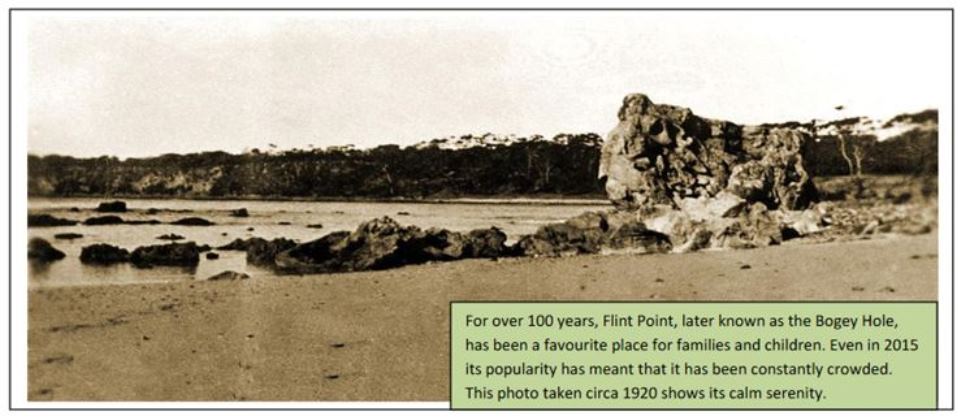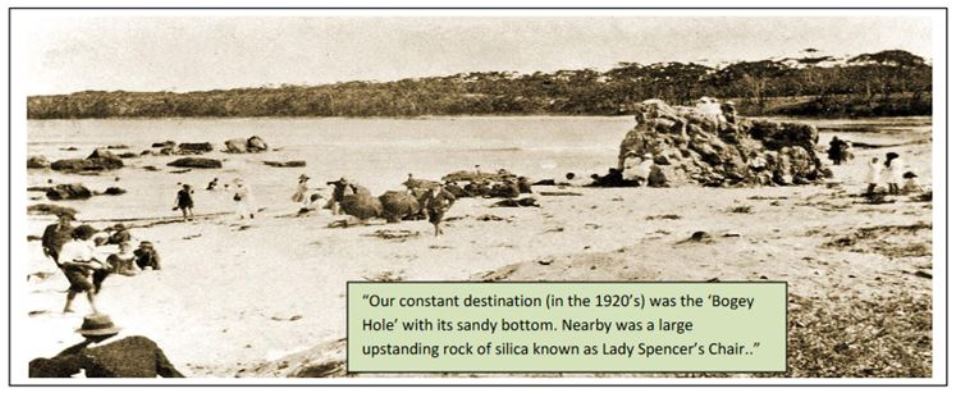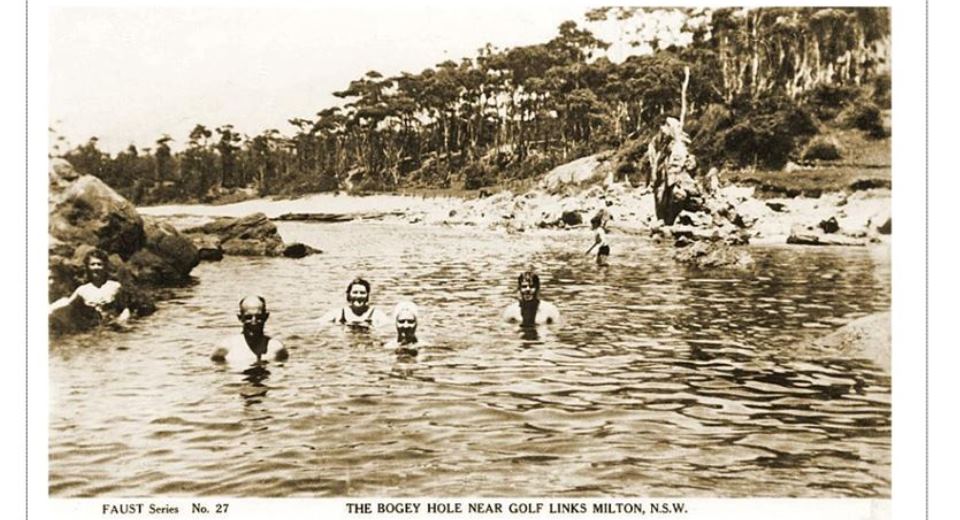.
Mollymook Bogey Hole, and its history.
.
.
THE MOLLYMOOK BOGEY HOLE
For well over 100 years this area has been the focal point of much district activity. People often ask about its history and in his recent publication “Mollymook Revisited” author Alex McAndrew has written a full history of the mining of silica rock in our area which today we know as the ‘Bogey Hole’. However back in 1918 the area to the south of Mollymook beach was originally called ‘Flint Point’.
.
The ‘flint’ or silica is extremely hard and capable of deflecting heat, and was and is, still used to manufacture refractory bricks. These are used to line steel work’s and blast furnaces. The silica here was found to be the purest in the world. It was considered to be a precious non-metal, but it has no real value unless it can be processed into bricks. When it was discovered it was estimated that there was possibly a million tons in the area. However only a small portion was mined.
When mining started the silica was transported by horse and dray to Ulladulla harbour for shipment north. Later on, a tramway was built along the old Princes Highway to the harbour. However by 1924, after many thousands of tons of silica were taken, the rest became too uneconomical to bother with and so mining shifted to North Mollymook, Narrawallee and then to Conjola. The area that was left behind was then called the ‘Bogey Hole’, (after the aboriginal word for a swimming hole), which soon became famous as a natural swimming enclosure where locals could swim (and still do) in comparative safety. Much of the rock which is still there is silica, including the large rock known as Lady Spencer’s Chair. This was named after the lady who owned much of the land in its vicinity and who used to go and sit on this rock and contemplate the endless sea. The popularity of the Bogey Hole has not diminished over the 100 or so years and with the addition of the concrete pathway and parking area is still a very popular place especially for the elderly and families with small children. It is certainly an iconic place.
*******************
Credit: “Mollymook Revisited”, Chapter IV ‘Flintstones & Flying Machines’ by Alex McAndrew and subsequent critique by Ivan Johnson
.



